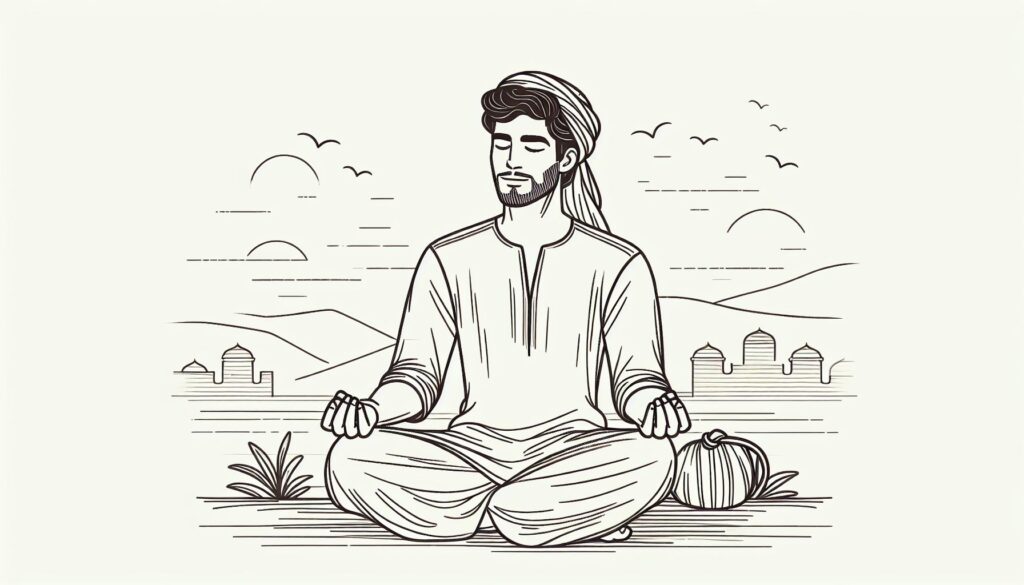Feeling stressed out and overwhelmed by the daily grind? I’ve been there too. That’s why I’m excited to share with you some simple yet powerful daily mindfulness practices that can help you find peace and calm in the midst of chaos.
In this article, I’ll walk you through practical techniques that you can easily incorporate into your daily routine to reduce stress and improve your overall well-being. From mindful breathing exercises to grounding techniques, I’ll cover it all to help you navigate through life’s challenges with a sense of clarity and resilience.
Join me on this journey to discover the transformative effects of mindfulness on your mental and emotional health. Let’s take a step towards a more balanced and centered life together.
Benefits of Daily Mindfulness Practices
Engaging in daily mindfulness practices offers a wide range of benefits for both the mind and body. Here are some key advantages:
- Stress Reduction: Mindfulness helps me manage stress better by promoting relaxation and coping mechanisms.
- Improved Mental Clarity: By practicing mindfulness, I enhance my focus and concentration, leading to better decision-making and problem-solving skills.
- Enhanced Emotional Well-being: Daily mindfulness enables me to regulate emotions effectively and develop a more positive outlook on life.
- Better Sleep Quality: Mindfulness practices contribute to improved sleep patterns and help me achieve a more restful night’s sleep.
- Increased Self-awareness: Engaging in mindfulness allows me to understand my thoughts and feelings on a deeper level, fostering self-discovery.
| Benefits | Description |
|---|---|
| Stress Reduction | Promotes relaxation and coping mechanisms |
| Improved Mental Clarity | Enhances focus, concentration, decision-making skills |
| Enhanced Emotional Well-being | Regulates emotions, fosters positive outlook |
| Better Sleep Quality | Improves sleep patterns and quality of rest |
| Increased Self-awareness | Enhances understanding of thoughts and feelings |
Mindful Breathing Techniques
When it comes to Mindful Breathing Techniques, I emphasize the power they hold in reducing stress and promoting relaxation. By focusing on the breath, I can anchor myself to the present moment and calm my mind. Deep breathing allows me to slow down, quiet racing thoughts, and release tension.
In my experience, practicing diaphragmatic breathing involves inhaling deeply through the nose, letting the breath expand the belly, and exhaling slowly through the mouth. This technique activates the body’s relaxation response, helping me feel more at ease and centered.
Counting breaths is another effective method I utilize to enhance mindfulness. By gently counting each inhalation and exhalation, I bring attention to the rhythm of my breathing, fostering a sense of peace and tranquility within.
I find that incorporating breath awareness into my daily routine serves as a valuable tool for stress relief. By observing the sensation of each breath without judgment, I cultivate a greater awareness of my thoughts and emotions, ultimately fostering a sense of calm and clarity.
Practicing these mindful breathing techniques regularly has enabled me to navigate life’s challenges with a greater sense of poise and resilience.
Body Scan Meditation
When incorporating Body Scan Meditation into my daily mindfulness routine, I find it particularly beneficial for relieving stress and promoting relaxation. This practice involves directing my attention to different parts of my body, starting from the top of my head and moving down to my toes. By intentionally focusing on each area and noting any sensations without judgment, I can cultivate a deeper awareness of bodily tensions and release them gradually.
During a body scan meditation session, I lie down in a comfortable position, close my eyes, and begin by bringing my awareness to my breath. Taking slow, deep breaths, I then shift my attention to the crown of my head, and slowly scan through each part of my body. I notice areas of tightness, tension, or discomfort, and as I exhale, I visualize releasing that tension and allowing the muscles to relax.
As I progress through the body scan, I often find myself more attuned to areas where I hold stress and can consciously work on letting go of that tension. This practice not only helps me release physical strain but also enables me to identify and address emotional stressors that manifest in my body. By regularly engaging in body scan meditations, I have noticed an improved sense of calmness, reduced muscle tension, and an overall feeling of relaxation in my daily life.
Gratitude Journaling
Practicing gratitude journaling is a powerful way to cultivate a positive mindset and reduce stress in daily life. Studies have shown that consistently acknowledging and writing down things you are grateful for can lead to increased happiness and decreased levels of anxiety.
Every day, I set aside a few minutes to reflect on the things that brought me joy, comfort, or a sense of fulfillment. I jot down these moments in a special notebook dedicated to my gratitude practice. This simple act of focusing on the good in my life helps me shift my perspective from what’s going wrong to what’s going right.
Keeping a gratitude journal doesn’t mean ignoring challenges or difficulties; instead, it encourages me to find light even in the darkest of days. By expressing gratitude for the small blessings, I am reminded of the richness of my life, fostering a sense of contentment and peace within me.
Incorporating gratitude journaling into my mindfulness routine has been transformative, enhancing my overall well-being and resilience in the face of stressors. Research has highlighted the mental health benefits of this practice, showing improvements in mood, sleep quality, and even physical health markers.
Establishing a Routine
When it comes to daily mindfulness practices for stress relief, one key aspect is establishing a consistent routine. Creating a structured daily schedule can help in cultivating mindfulness and reducing stress effectively. Here are some tips on how to establish a routine that promotes a calm and focused mindset:
- Start the day mindfully: Begin each day with a mindful morning routine that sets a positive tone for the day ahead. This can include meditation, deep breathing exercises, or simply taking a few moments to express gratitude for the new day.
- Schedule regular mindfulness breaks: Throughout the day, carve out time for short mindfulness breaks to pause, breathe deeply, and center yourself. These breaks can help in alleviating stress and improving mental clarity.
- Incorporate mindfulness into daily tasks: Infuse mindfulness into your daily activities such as eating, walking, or working. Paying attention to the present moment during these tasks can enhance focus and reduce anxiety.
- Create a calming bedtime routine: End your day with a relaxing bedtime routine that signals to your body and mind that it’s time to unwind. This can include gentle stretching, journaling, or reading a calming book.
- Stay flexible: While having a routine is important, it’s also crucial to be flexible and adapt to the needs of each day. Allow room for spontaneity and self-care when necessary.
By establishing a mindful routine, I find that I can navigate daily challenges with greater ease and resilience. This consistent practice of mindfulness not only helps in alleviating stress but also promotes a sense of well-being throughout the day.
Key Takeaways
- Engaging in daily mindfulness practices offers benefits such as stress reduction, improved mental clarity, enhanced emotional well-being, better sleep quality, and increased self-awareness.
- Mindful breathing techniques, including diaphragmatic breathing and counting breaths, are effective tools for reducing stress and promoting relaxation.
- Body scan meditation helps in relieving stress by releasing bodily tensions and fostering a deeper awareness of physical and emotional stressors.
- Gratitude journaling is a powerful way to cultivate a positive mindset, reduce stress, and increase happiness by focusing on the good in life.
- Establishing a routine that includes mindful morning practices, regular mindfulness breaks, infusing mindfulness into daily tasks, creating calming bedtime routines, and staying flexible can significantly reduce stress and enhance overall well-being.
Conclusion
Incorporating daily mindfulness practices into your routine can significantly reduce stress levels. By following a structured schedule that includes mindful activities throughout the day, you can cultivate a sense of calm and focus. Starting your day mindfully, taking regular mindfulness breaks, integrating mindfulness into daily tasks, establishing a soothing bedtime routine, and remaining adaptable are key components to promoting overall well-being and managing stress effectively. Embracing mindfulness allows you to approach challenges with resilience and navigate through life’s demands with greater ease. Prioritizing your mental well-being through mindfulness practices is a powerful tool for achieving stress relief and enhancing your quality of life.



